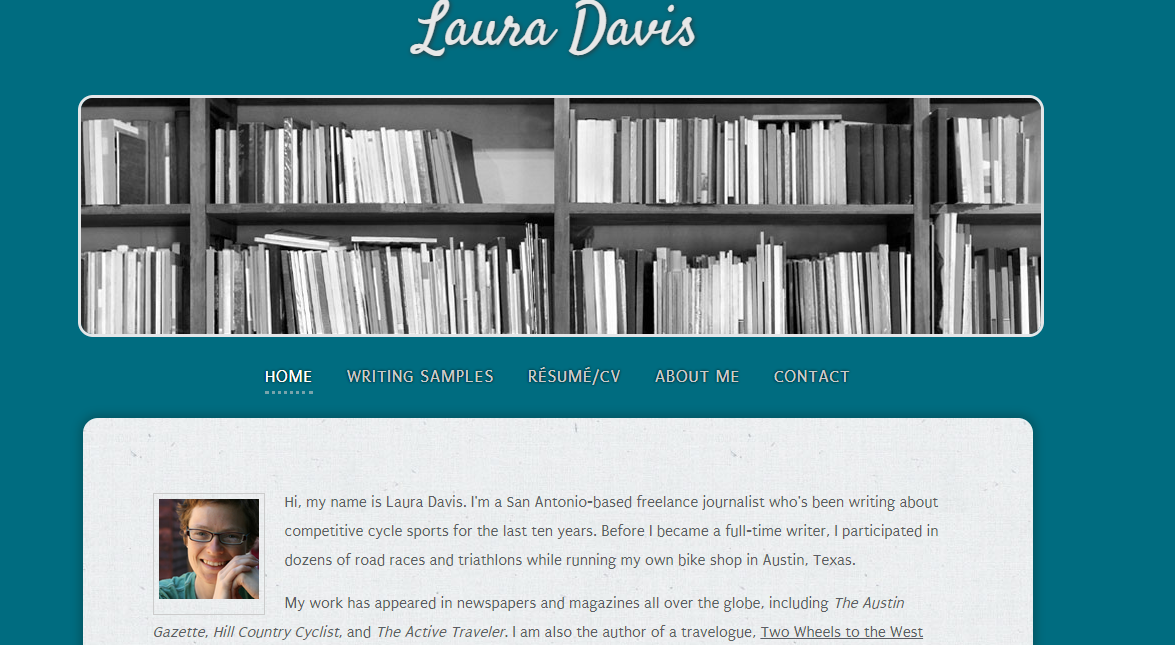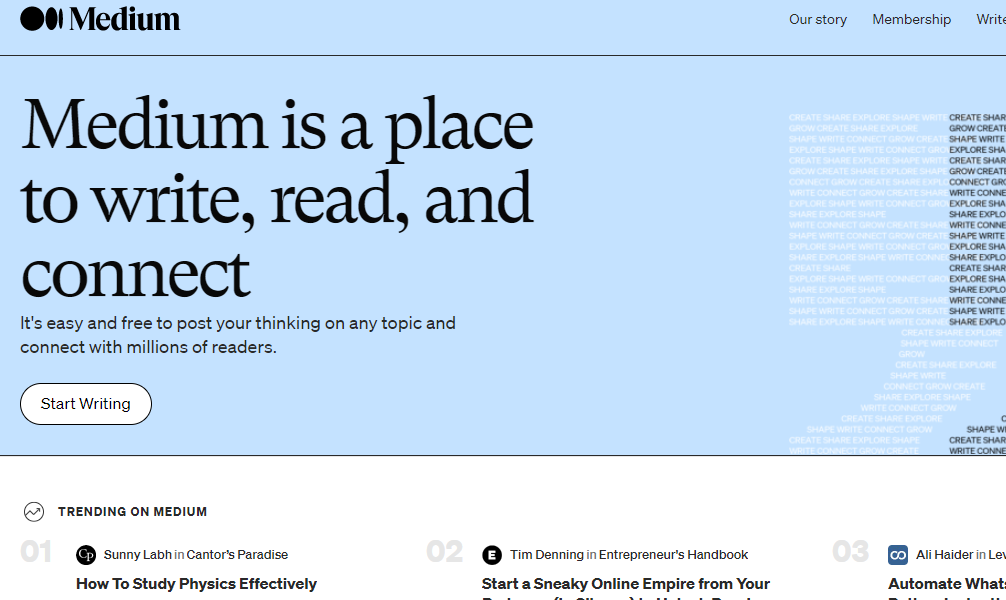By having a beautiful, well-organized portfolio, you're more likely to land projects at work, or in school. But creating a good portfolio can be challenging and time-consuming for non-techie writers.
Thankfully, there are some websites that make it easier for writers to create their portfolios with little hassle. Here, we list down the seven best portfolio websites for writers.
1. The Freelance Creative by Contently
Contently is a content marketing platform that connects renowned brands with talented freelance writers. Each writer at Contently gets a personal portfolio where they can showcase their writings.
To create a portfolio, go to The Freelance Creative by Contently, create your profile, and enter your information. This includes your image, links to social accounts/websites, city, and a bio.
Importing your projects is quite simple, as you can do so by adding a URL or a PDF. You can add multiple projects and re-arrange them on your portfolio page, but you can’t customize the entire webpage.
With each project, you add an image and a brief description. You can also specify more details like the title, format, and skills utilized.
For both beginners and seasoned writers, Contently is a great and completely free portfolio website. Best of all, it can connect you with some top, high-paying brands, provided your profile meets their criteria.
2. Muck Rack
Another widely used portfolio site, besides Contently, is Muck Rack. It is a PR management platform that connects PR teams with journalists and vice versa.
Among the other things, it lets journalists create a portfolio of their work. Though aimed at journalists, it’s equally useful for bloggers, writers, and anyone with a text-heavy portfolio.
Muck Rack automatically creates profiles of writers and journalists by aggregating information. If it has made your profile, you can claim it. Otherwise, build one from scratch.
On your profile, you can add basic information about yourself, your pitch preferences, contact information, and social links. Moreover, you can display any award that you’ve won on your Muck Rack profile.
Though you can upload your projects, importing via URL is much easier, as Muck Rack fills the details automatically. With your name, Muck Rack shows the publications you’ve written for, which adds credibility.
Moreover, you can request and get a verification badge from the Muck Rack team. Creating a portfolio doesn’t cost you anything besides a little time.
3. Journo Portfolio
Journo Portfolio gives you several advanced features and customization options for your portfolio website. Creating a portfolio on Journo Portfolio is quite simple.
It offers nine different themes and the ability to customize them. You can take inspiration from the example portfolios showcased on its website.
Thanks to its block editor, creating and designing pages is quite simple. Using these blocks, you can easily add projects, your bio, contact form, etc. You can even start a blog and publish articles on your portfolio site.
The Journo Portfolio sites are mobile-friendly and SEO optimized. It offers different privacy options and analytics.
The basic plan is free, which lets you add ten articles and create a homepage. You can upgrade to the Plus plan to add unlimited articles and pages for $2.50 per month.
The Pro membership provides article backups, integrations, automatic imports, and a custom domain name. It costs $5 per month. The modern look and feel and the ability to personalize your portfolio make Journo Portfolio stand out.
4. Clippings.me
Clippings.me is a popular portfolio site with over a hundred thousand users. It has different themes, all with a modern layout that you can customize. You can add projects and categorize them to make it easier for a better structure.
With a minimalist design, the Clippings.me portfolio is great for anyone to get their portfolio live within no time. Clippings.me offers integration with Google Analytics and the option to use a custom domain name.
They have a free plan as well as a premium one that costs $10 per month. The premium plans give you the option of using a custom domain, detailed analytics, and SEO optimization.
Moreover, a free account can display only ten articles, so you’ll need to upgrade for adding more. It also has a journalist directory, so creating a portfolio there gives you another chance to showcase your services.
Whether you're a journalist, a copywriter, or a blogger, a Clippings.me portfolio can help you showcase your skills.
5. Writer’s Residence
Writer’s Residence is another easy-to-use site for creating a portfolio.
Along with the homepage, you can create web pages for resumes, samples, bio, and contact. Using the Markdown editor, you can easily style your text. Moreover, it lets you create a blog on your portfolio site.
Writer’s Residence allows you to choose from a variety of different themes. Despite being clutter-free, these themes look a bit outdated. You can connect a custom domain name and add as many samples as you want.
Creating a portfolio on Writer’s Residence costs almost $9 per month, after a 30-day free trial.
6. Medium
Medium is not a portfolio site but a platform for writers to share their ideas and stories.
Nevertheless, you can use your Medium profile as a portfolio. A good reason for doing so is that it’s free and really simple to get started. Just sign up on Medium, click on your profile image, and select Write a Story.
The basic layout of your profile remains the same, though you can edit the colors, headers, and fonts.
However, avoid publishing pieces you’ve written for your clients on your Medium profile without their consent. If you can not write something new, a better way to showcase your samples is to add a brief description and the link to the originally published work.
One of the other reasons to write on Medium is that you can build your own following, thanks to the millions of readers Medium has. Moreover, this site has a partner program where you can get paid for views on your posts. Creating a portfolio on Medium is completely free.
7. Blogger
Blogger is actually a content management system, used to create simple blogs. But since it offers a variety of customization options, you can host your portfolio on Blogger.
From themes and layout to the number of pages and their design, you can change almost anything. Like Medium, it is better to add a description and link to your writing pieces instead of republishing. But it’s best if you can write something new for your portfolio and publish it there.
Considering it might be a bit more technical, you should go this route only if you need more control and customization. Similarly, if you require complete control over how your portfolio looks, you can use other website builders to create your portfolio.
Build Your Online Portfolio
For any writer, blogger, or journalist, having a well-organized portfolio is the best way to showcase their skills.
Whether you lack coding skills or want to save time, these intuitive portfolio websites make it simple for you to create a decent portfolio.








